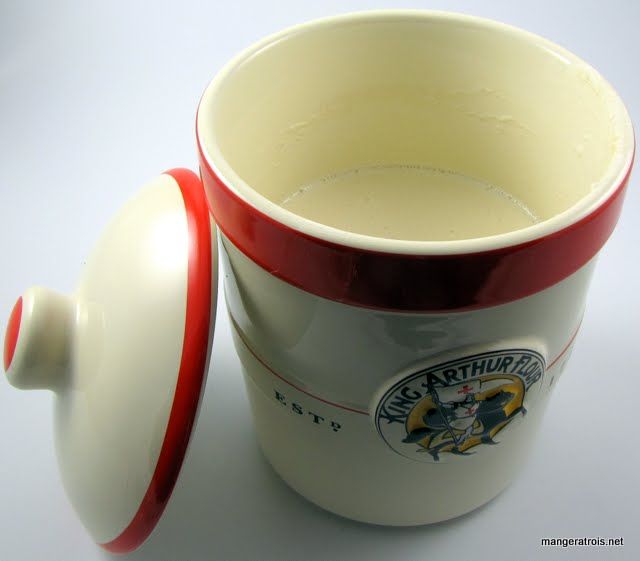Experiments in Sourdough #2
So far, so good. I put together my sourdough starter on Monday, January 4. On Wednesday, January 7 I followed the instructions for the first feeding. Then I went out of town until Sunday, January 10 and the first thing I did when I got home was start my first loaf of sourdough bread. Then I fed the starter and the process begins again!
Sourdough Starter Replenishment
Ingredients
1-1 1⁄3 cups any flour (Flour type will depend on what you used in the original starter.)
1-1 1⁄3 cups water
1 heaping tablespoon plain yogurt or a pinch of sugar, optional
Instructions
1. Let the refrigerated starter come to room temperature. Stir well. Discard half of the starter if you haven’t used any and you don’t want to accumulate too much. Pour the remaining starter into a bowl. Add equal amounts of flour and water. Add yogurt or sugar if you want to increase starter activity. Mix well.
2. Wash out the original starter container using soap and hot water, or by running it through the dishwasher, to get rid of any remaining bacteria. Then return the starter to the original container and cover it with several thicknesses of cheesecloth held in place with a rubber band. Let the starter stand at room temperature, stirring several times a day, until bubbly, overnight to 2 days depending on how sour you want it. It will continue to bubble and expand. If the starter turns colour, has an unpleasant aroma, or grows any type of mold, the starter is out of balance and must be completely discarded. Do not leave the starter at room temperature longer than 5 days without feeding it.
3. After the starter has been allowed to stand at room temperature to ferment, cover it with a layer of plastic wrap help in place with a rubber band, or transfer it to a freezer-quality self-sealing bag, and refrigerate it. The best starters are those used and replenished at least weekly.
